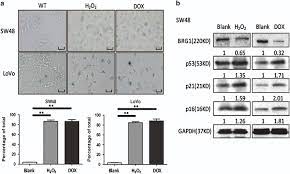Senescence Associated β-galactosidase Assay
Due to its involvement in many cellular processes such as normal ageing, tumor suppression, chronic diseases and many more, cellular senescence has gained increasing attention since its first description over 50 years ago. In addition, understanding of cellular senescence is invaluable in the development of therapeutic targets in the fight against age-related co-morbidities, cancer and chronic disease progression.
Over-expressed in senescent cells, Senescence-associated β-galactosidase (SA-β-gal), has been widely used as a marker of cellular senescence. In order to specifically detect this biomarker directly in living cells or tissues, let’s take a look at an easy and ready-to-use assay recently developed: the SPiDER-βGal- Cellular Senescence Detection kit.

SPiDER-βGal- Cellular Senescence Assay: principle
Based on the use of the new Dojindo Technology’s SPiDER-β Gal compound, this assay will detect SA-β-gal with high sensitivity and easily in only 30 minutes. Thanks to high cell-permeability and high retention inside cells, SPiDER-β Gal can specifically detect SA-β-gal in living cells by using a reagent, Bafilomycin A1, to inhibit endogeneous β-galactosidase activity.
In addition, SA-β-gal in fixed cells is also detectable by using McIlvaine buffer (pH 6.0). Since SPiDER-βGal emits strong and stable fluorescence after the reaction with SA-β-gal, it can be applied for fluorescent microscopy detection and also to quantitative analysis by flow cytometry.
Normal mammalian cells divide in a fixed number of population doublings and eventually enter an arrested state in which the cells are still alive, but do not proliferate in response to mitogens, and exhibit a characteristic expanded, flattened morphology.
Senescence associated β-galactosidase (SA-β-gal) is a widely used biochemical marker for assessing cellular senescence. SA-β-gal can be detected by 5-bromo-4-chloro-3-indolyl-β-D-galactopyranoside (X-gal) at pH 6.0, which inhibit lysosomal β-galactosidase activity sufficiently to ensure that non-senescent cells remain unstained.
This method to detect SA-β-gal is a convenient, single cell-based assay that can recognize senescent cells even in heterogeneous cell populations and aging tissues such as skin biopsies from older individuals.
